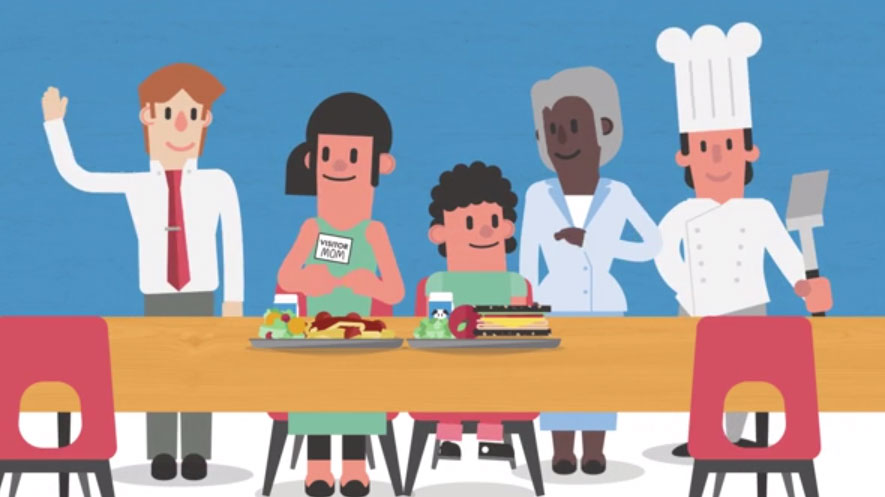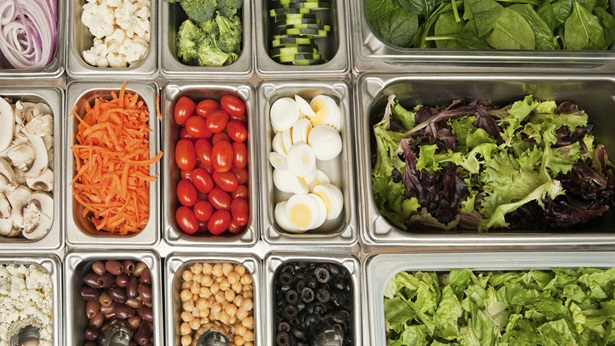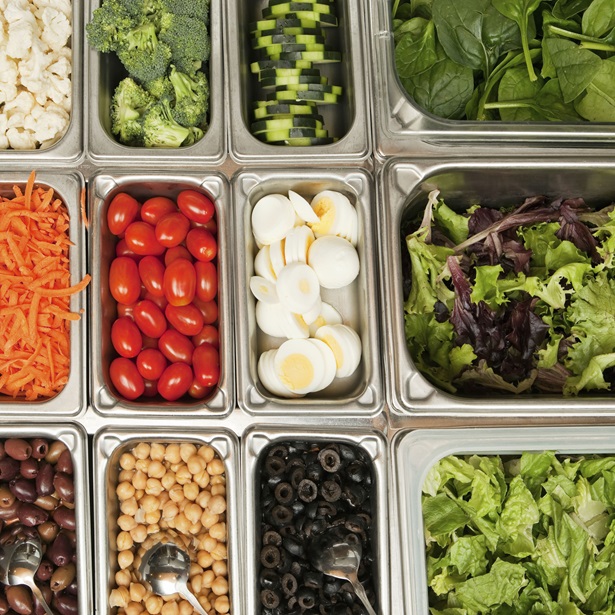Majority of Michigan Voters Back Healthy School Food Standards
 © The Pew Charitable Trusts
© The Pew Charitable TrustsCafeteria staff prepare school lunches for students.
A statewide poll released today by the Kids’ Safe and Healthful Foods Project finds that Michigan voters overwhelmingly support current national nutrition standards for school foods. Seventy-nine percent of state voters overall and 82 percent of those with children in public school favor the healthier lunch and breakfast requirements, which were introduced nationwide at the start of the 2012-13 school year. Support is even higher—85 percent—among parents whose children eat a school lunch at least four days a week.
In addition, more than 7 in 10 voters and public school parents in the state back the complementary Smart Snacks in School rule, which covers items sold in vending machines, at snack bars, and on a la carte cafeteria menus and took effect for the 2014-15 school year. The rule sets maximum limits on the fat, salt, sugar, and calories in these foods and beverages, while leaving to state leaders the decision on whether to create exemption policies for school fundraisers that don’t meet nutrition standards.
Pollster Memo (PDF) | Full Results (PDF)
Support for School Meal Standards Crosses Party Lines
We asked:
Do you favor or oppose requiring public schools to meet these national nutrition standards for school meals?
| % Favor | |
| Registered voters | 79 |
| Republicans | 65 |
| Independents | 80 |
| Democrats | 92 |
Source: Michigan School Nutrition Survey, February 2015
Our survey also examined public views of specific parts of the nutrition standards and found that, for several of them, voter and parent support is as great or stronger. Ninety-three percent of voters believe every school meal should include a serving of fruits or vegetables, 80 percent say salt should be limited, and 70 percent support providing whole-grain foods with all meals.
Key Nutritional Improvements Receive Strong Support
We asked:
Do you think public schools should be required to do the following with every school meal? And do you feel strongly about that?
Include a serving of fruits or vegetables
| % Yes | (Strongly) | |
| Registered voters | 93 | (87) |
| Parents of K-12 public school students | 95 | (89) |
Provide foods made from whole grains
| |
% Yes | (Strongly) |
| Registered voters | 70 | (52) |
| Parents of K-12 public school students | 75 | (56) |
Limit the amount of salt
| |
% Yes | (Strongly) |
| Registered voters | 80 | (61) |
| Parents of K-12 public school students | 86 | (66) |
Source: Michigan School Nutrition Survey, February 2015
President Harry Truman signed the National School Lunch Act 69 years ago this month, and the U.S. Department of Agriculture has updated the nutrition standards for the program routinely over the seven decades since. The changes made at the start of the 2012-13 school year require lunches and breakfasts to avoid excess fat, salt, and calories and to include more lean protein, low-fat dairy products, and fruits and vegetables. As of December 2014, more than 97 percent of Michigan schools are certified as meeting these healthier standards.
About 8 in 10 parents of public school students say serving nutritious foods in schools is “very important” to “ensure that children are prepared to learn and do their best.” Virtually all voters (96 percent) agree it is at least somewhat important. And about the same share (95 percent) believe it is important that nutrition education be part of the school curriculum.
When asked about ways to improve school food, 77 percent of Michigan public school parents say offering a variety of fruits, vegetables, and whole grains would be a step forward. Sixty-three percent think serving more locally grown fruits and vegetables would improve meals, and 77 percent believe meals are better when prepared in the cafeteria’s kitchen instead of being prepackaged and reheated. Although many schools have made such adjustments to their menus and cooking approaches, others are hampered by outdated or limited kitchen facilities. In a survey of school food service directors, 97 percent of respondents in Michigan reported needing at least one piece of equipment—at a median cost of $54,000 per school—to better serve nutritious foods.
School nutrition professionals across the country strive each day to prepare healthful, appealing meals despite limited resources. This latest poll shows that the importance of their work to children’s nutrition and education is clearly appreciated by Michigan voters and public school parents. And this broad public support creates even more opportunities to strengthen school meal programs and students’ well-being.
More about the poll
The Michigan statewide poll was conducted by Public Opinion Strategies and Hart Research Associates for the Kids’ Safe and Healthful Foods Project, a collaboration between The Pew Charitable Trusts and the Robert Wood Johnson Foundation. Data were collected via landline and cellular telephone surveys Feb. 23-26, 2015, among 700 registered voters, including 213 parents or guardians of children in K-12 public or charter schools. The margin of error on the sample of 700 is plus or minus 3.7 percentage points, and the margin of error on the sample of 213 is plus or minus 6.7 percentage points.
The poll is part of a series of state surveys conducted for the project. Each has revealed overwhelming support for the nutrition standards that are in place for school lunches and breakfasts as well as the snack food and drinks sold separately. Similarly, a June 2014 poll showed strong support for these policies among K-12 parents nationwide.


America’s Overdose Crisis
Sign up for our five-email course explaining the overdose crisis in America, the state of treatment access, and ways to improve care
Sign up

This video is hosted by YouTube. In order to view it, you must consent to the use of “Marketing Cookies” by updating your preferences in the Cookie Settings link below. View on YouTube
This video is hosted by YouTube. In order to view it, you must consent to the use of “Marketing Cookies” by updating your preferences in the Cookie Settings link below. View on YouTube
Latest from Health








